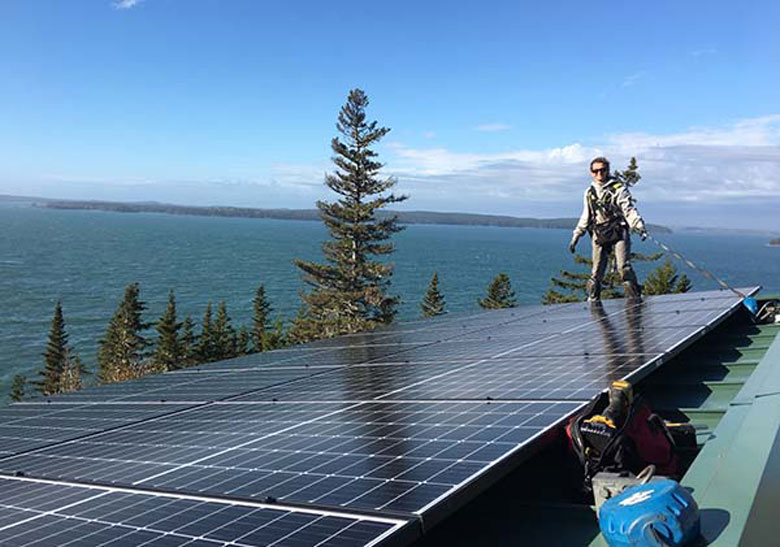Last December, Maine rolled out its updated state climate action plan, “Maine Won’t Wait.” The plan is the result of input from thousands of Mainers and it will shape the state’s climate actions and strategies for the next four years. So why should you care about this new plan?
For starters, if you’re wondering how Maine’s climate will evolve over the next decades, this plan has the latest science on air and ocean temperatures, storm frequency, and more. Rather than focusing on global predictions, the plan presents data specific to Maine, so if you work in natural resources, tourism, or enjoy outdoor recreation, this section offers valuable insights.
Many of us have seen firsthand how climate change is already affecting Maine—whether through last winter’s severe storms or shifting weather patterns. If you’re wondering what you can do to help mitigate climate change and better prepare, the plan is full of practical ideas.
From making your home or business more energy-efficient to helping your community build resilience through improved public infrastructure, the plan provides concrete steps and funding to take action.
For every $1 spent on disaster prevention, $13 is saved in damages and recovery costs.
For example, the plan will enhance the support for Maine’s Efficiency Maine Trust, which promotes energy-saving programs. This includes offering rebates, loans, and educational resources to help homes, businesses, and institutions lower their energy use and greenhouse gas emissions.
These actions not only reduce environmental impact but also boost local economies by promoting job growth, improving energy reliability, and increasing energy independence.
If you’re concerned that climate action is a luxury Maine can’t afford, consider this: a study from the U.S. Chamber of

Commerce found that investing in climate preparedness saves money in the long run. For every $1 spent on disaster prevention, $13 is saved in damages and recovery costs.
Last winter’s coastal storms alone cost Maine an estimated $70 million in infrastructure damage. Nationally, the 2023 East Coast floods incurred damages of over $1.3 billion. Clearly, preparing for climate impacts now is an economic necessity.
If you’re looking for hope, the plan offers plenty. Maine has already seen significant progress in climate action over the past four years. As of December 2023, 175 towns have developed climate resilience plans, over 15,000 clean energy jobs have been added, and more than 100,000 heat pumps have been installed.
These achievements show that action is possible and effective. The science of hope tells us that learning about the issue and ways you can take action can help us feel empowered and optimistic about the future.
The plan includes inspiring success stories from communities and individuals who are already making their homes, infrastructure, and public health programs more climate resilient. By following their example, you too can take steps toward a climate-ready future.
Ultimately, the “Maine Won’t Wait” plan is essential because it guides the state’s approach to critical issues like climate change, economic resilience, and community well-being.
Whether you’re concerned about the environment, Maine’s economy, or the future of your community, this plan is a vital tool for ensuring that the state’s policies reflect the needs of its residents. By staying informed and engaged, you can contribute to shaping Maine’s climate future.
Jennifer Seavey is chief programs officer for Island Institute, publisher of The Working Waterfront. She may be contacted at jseavey@islandinstitute.org.





